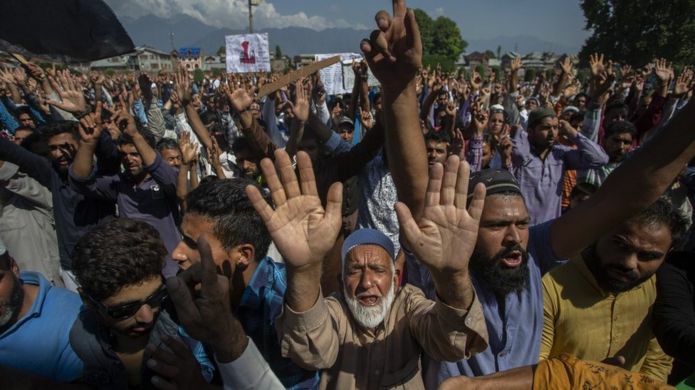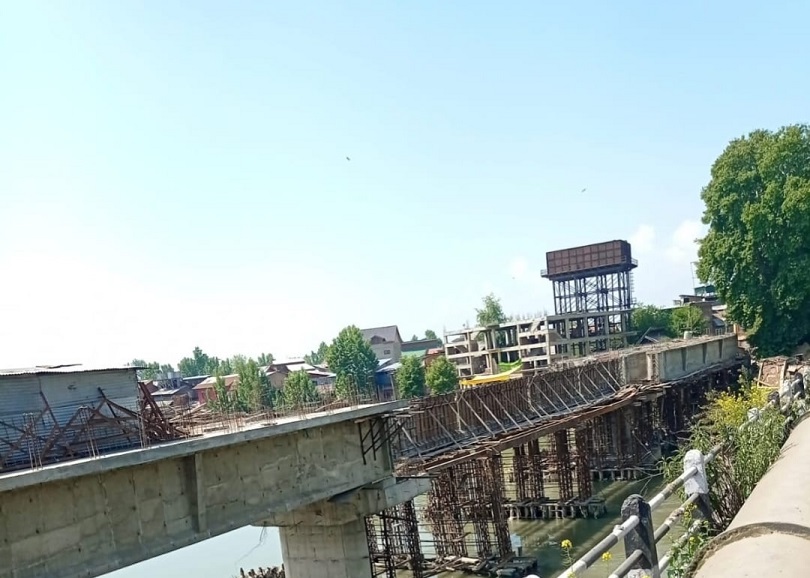No one in the region or the world is more concerned about the outcome of India, Pakistan talks than Kashmiris
THE surprise thaw in India, Pakistan relations has become a major talking point in Kashmir: it figures in everyday social interactions, social media threads and whatsapp groups. People are curious to know what led to the sudden re-engagement between the two estranged countries, where could it lead to and more importantly whether it could usher in any change in Kashmir.
As for what led to the detente, it is anybody’s guess. For clues, we need to look at the evolving geo-political environment. China’s incursions in Ladakh, the endgame in Afghanistan war and the emerging cold war between the US and China are redrawing geopolitics of the region. This has drawn the US closer to India and China to Pakistan.
In fact, Washington’s priorities with India are no longer regional in their nature but their scope is the larger geo-politics. In recent years, the US-India engagement has been a direct outcome of the remaking of the global power equation with India not only being recognized as a global power in its own right but also as a countervailing force to China, the world’s No 2 power. It goes without saying that India’s 1.3 billion population with a value addition of a burgeoning middle class has become an ultimate attraction for the west.
On the other hand, the alliance between China and Pakistan has deepened. More so, at a time when China is staying put at the three friction points in Ladakh after sorting out Pangong Tso. While US and Pakistan are still reasonably good friends, it is the mutual expedience that keeps them tied together. The relationship will snap at the first opportunity the US outgrows the need to seek Pakistan’s assistance in securing geo-strategic objective in the region. And this can happen sooner than later. Pakistan is already apprehensive about once again losing its leverage with the US following the latter’s exit from Afghanistan. Things are likely to become more difficult, if the west sees Islamabad as an ally of China at a time when a new cold war is breaking out, now between the US and the China.
India’s situation is also difficult: The power differential between India and China is growing. Over the last three decades, China has become a far bigger power than India, both economically and militarily. So much so that China is now seen as a credible rival to the US which has otherwise been the sole superpower since the break-up of the USSR in 1989. India’s choices are thus stark: It has to either co-operate with China in a subservient position. Or try standing up to Beijing by entering into a formal alliance with the US and becoming an active member of Quadrilateral Security Dialogue – a grouping comprising the US, Japan, Australia and India – also called Asian NATO. Both choices have their consequences, more detrimental than favourable to India. So, New Delhi has so far been chary of committing itself to either side so as to maintain its strategic autonomy. This would involve negotiating its relations with Beijing and also engage with the US.
But this leaves out Pakistan. The long running estranged relationship between India and Pakistan has been the singlemost factor that has been complicating the matters in the region. The relationship plunged to its nadir after the withdrawal of J&K autonomy. So, if there has to be a stable South Asia, it will involve a broad reconciliation among the three major powers of the region: China, India and Pakistan. And this would need resolving the existing differences and reconciling the contending interests of the three countries which essentially keep the region destabilized.
Need is for a broader regional approach to reconcile the competing interests of the three countries and to work for an integrated solution to the longstanding conflicts. Deferring the resolution is certain to aggravate the rivalries, especially the one between India and Pakistan.
So far there has hardly been a regional effort that works to resolve issues in a cooperative framework. Each country is looking to secure their respective interests rather than work together for a solution.
Is the recent disengagement with China at Pangong Tso and the talks Pakistan a step in this direction? We frankly don’t know. All we know both the developments took place almost simultaneously. But there are the other explanations too, as the reports and analyses in the media in India, Pakistan and the other international publications would have us believe. And it hardly matters what led to the engagement as long as it delivers to the benefit of all. If the history is any guide, such hopes have invariably been belied. The issues underlying the lingering distrust among the powers in the region, especially between India and Pakistan, are not amenable to a solution unless the countries are not only ready to stay the course but also willing to mutually concede.
No one in the region or the world is more concerned about the outcome of these talks than Kashmiris. For over seventy years, the region has been turned into an unremitting battleground for competing nationhoods of India and Pakistan. And with every passing day, this conflict is getting messier and bloodier, something that has turned the lives of Kashmiris into a living hell.
Views expressed in the article are the author’s own and do not necessarily represent the editorial stance of Kashmir Observer
Follow this link to join our WhatsApp group: Join Now
Be Part of Quality Journalism |
|
Quality journalism takes a lot of time, money and hard work to produce and despite all the hardships we still do it. Our reporters and editors are working overtime in Kashmir and beyond to cover what you care about, break big stories, and expose injustices that can change lives. Today more people are reading Kashmir Observer than ever, but only a handful are paying while advertising revenues are falling fast. |
| ACT NOW |
CLICK FOR DETAILS














